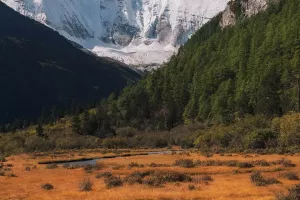Most of the worlds we travel into, whether it's Westeros or Wisconsin, are shown to us through a character's point of view. These are called overhead, aerial, bird's eye shots. And they're all over movies and television.
An aerial shot is a classic camera angle captured from an elevated vantage point. Aerial photographs present a deeper understanding of the action happening below from a bird’s eye view. This requires specific camera equipment, which usually involves the camera placed on an elevated platform, floating object, or aircraft.
Aerial shots can convey a sense of scale and geography through a high or elevated vantage point. Additionally, birds-eye-view is another terminology used to describe this shot. Sometimes considered a point-of-view shot, they can convey an omniscient perspective. Acquiring an aerial shot requires deliberate planning and often special equipment. For instance, this equipment can range from planes, helicopters, cranes, and drones, to name a few.
In the history of aerial photography, airborne cameras have captured excellent images of natural disasters and combat. The cameras were launched into the sky using kites, balloons, and even rockets. In 1858, the first successful aerial photograph was taken from a hot air balloon at 262 feet over Petit-Bicêtre by Gaspar Felix Tournachon, commonly known as ‘Nadar’. However, the original images taken by him were lost. The oldest aerial photograph available is taken in 1860 by James Wallace Black, 2000 feet above Boston from a tethered hot air balloon, Queen of the Air.
Later, George Lawrence perfected taking aerial shots by strapping large-format cameras with curved film plates to kites. Using this method, he captured the most famous photograph during the 1906 San Francisco earthquake and fire by suspending 17 kites at 2000 feet in the air.
During this period, aerial photographers elsewhere in the world were experimenting with other methods. In 1903, Alfred Maul, a German Engineer, demonstrated a gunpowder rocket that could reach 2600 feet in eight seconds would jettison a parachute equipped with a camera and capture images during its descent. During the same year, Julius Neubronner, a German Apothecary, who was curious about the whereabouts of his prescription delivering pigeons, strapped cameras to the pigeons to track their routes. He also used his pigeons to capture images of the 1909 Dresden International Photographic Exhibition.
Some years after the first flight of the Wright Brothers in 1903 at Kitty Hawk, piloted and powered aircraft were used for aerial photography for the first time. In 1908, L.P. Bonvillain, a Cinematographer, captured the first known photo from an airplane over Le Mans in France, piloted by Wilbur Wright.
Aerial shots look cool and can add production value. However, when grounded in narrative or emotional purposes for the film, they are better appreciated. Often Aerial shots are used for film openings or closings as well as scene establishing shots. They can help to set up the audience in the story world, act as a resetting moment, or convey large scopes of information from a wide perspective. Certain genres of film gravitate toward aerial shot usage like thriller, action, and sci-fi films. Big budget productions often feature special effects on a big scale that can convey a sense of awe.
Aerial shots can create metaphorical or abstract moments. The inherent distance and point of view from above feels omniscient. At this moment, the viewer may feel a sort of detached, outsider’s observation.
Aerial shots can be visually engaging, stimulating, and thought-provoking when used strategically. Knowing where to place these shots or how long to hang on a shot can be challenging. Watching tv and movies can be helpful to build your knowledge, but hands-on practice is best!


